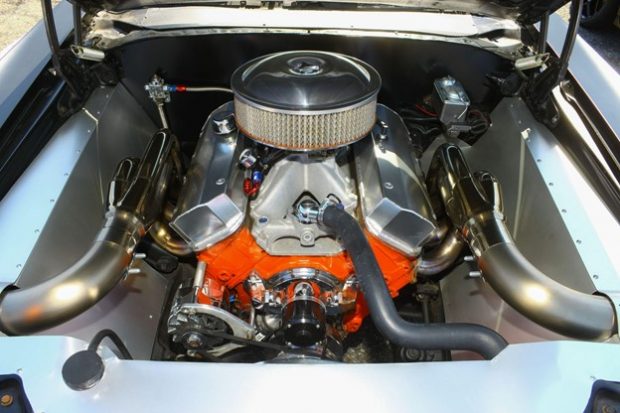
When people talk about the big block engine sound in Chevy vehicles, they are usually talking about large V8 engines. They were a mainstay of the company’s line of cars from the 1950s through the early 2000s. Even though Chevrolet had already developed a reputation for producing reliable smaller V8 engines, the company needed something more powerful for its heavier trucks and SUVs. This led to the development of the big block engine. From there, the line of engines would become a critical part of automotive history, with many people still using the engine to this day.
The First Chevy Big Block Engine
By the time the big block engines were developed, Chevy had already developed a reputation for performance. The company produced its first V8 engine in 1917. It was an overhead valve engine with a 90-degree angle. The small-block engine was introduced in 1955, which served as the precursor to the famed big-block engines.
The first generation of true “big block” engines was introduced in 1958. The 1958 Mark I, W Series engine featured more than 430 horsepower and greater than 435 foot-pounds of torque.
The Most Notable Chevy Big Block Engine: The Mark IV Big Block
After the development of the Mark I W Series, there were a few other big-block engines produced. The Mark II Big Block engine was designed in 1962 and released in 1963. It featured greater power and better reliability. While there was also a Mark III engine, it did not have a lot of notable differences from the Mark II Big Block, as Chevy was already working on a new Mark IV, which would become its flagship “big block” engine.
In 1965, the Mark IV engine made its debut. This engine had several notable differences from the original Mark I, W Series big-block engine. The valves were in a different location, and the shape of the combustion chambers varied significantly. The Mark IV engine also featured a conventional wedge chamber along with a 90-degree angled deck.
Some people refer to this as the “rat motor,” as the popular small block engines were often called the “mouse” motor. The comparison made sense, and the nickname would stick.
The engine also received a few changes that would improve the flow of oil. The goal was to maximize the oil flow throughout the engine at all times to ensure the engine remains lubricated. This would reduce the friction throughout the parts, increasing the power and efficiency of the engine while also reducing wear and tear. This led to an engine with a much longer lifespan.
Even though this engine was used throughout numerous Chevrolet vehicles, it made its debut in the 1965 Chevrolet Corvette, quickly making this one of the most popular makes and models in the company’s history. It was also used in Chevrolet Chevelles from 1965 to 1972, Chevrolet Camaros from 1967 to 1972, and the Chevrolet Monte Carlo from 1970 to 1972.
The Generation V Big Block Engines
The popular line of big-block engines went largely unchanged for the next few decades. Eventually, General Motors would make significant changes to the big block engine for Generation V. The main oil galley was moved, and the mechanical fuel pump was eliminated. The valve train was adjusted as well. Minor structural changes were made to improve the strength and durability of the bores, reducing the frequency of problems.
The engine continued to make use of the popular Throttle Body Injection System (TBI), which was introduced in other big-block engines in the late 1980s. Overall, the engine had a positive reception, improving on a lot of the flaws of the Mark IV, which had become outdated in some ways.
The Generation VI Engines of the Late 1990s
The late 1990s saw the introduction of the Generation VI big-block engines. Technology had come a long way, and the engine received some updates. Multiport fuel injection improved gas mileage efficiently, and onboard diagnostics reduced the frequency of repairs. Even though mechanical changes were relatively minor, the Vortec 7400 became a mainstay of Chevy vehicles in the late 1990s, including the Chevrolet Suburban and the Chevrolet Express.
Author Bio: This article is brought to you by the automotive content marketing team at automotive-marketing.com.
VN:F [1.9.22_1171]
VN:F [1.9.22_1171]
Source link


